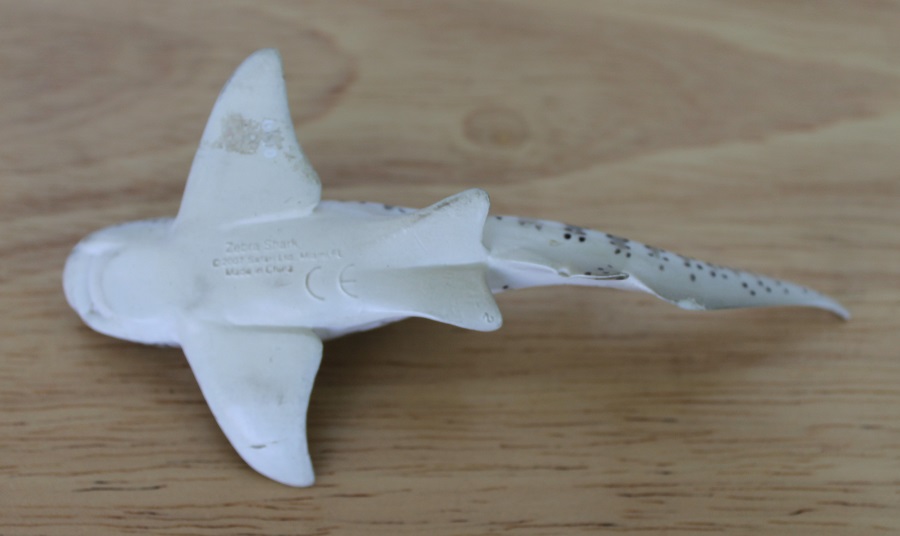When we think of sharks it is usually species like the great white, tiger, or bull sharks that immediately come to mind. If not those particular species there is at least the generic idea of what a shark looks like and indeed, many species fit that mold. But sharks are an incredibly diverse group of animals that come in all shapes and sizes in order to fit into whatever niche they’re a part of. Today we’re looking at the zebra shark (Stegostoma fasciatum) which certainly breaks the mold of what we think of when we think of a shark. While many sharks inspire fear and emotions associated with fear, this one inspires about as much of that as a sea turtle or manatee. It’s among the most beautiful, elegant, and docile of sharks, about as far removed from something like a great white as you can get.

The Safari zebra shark was produced in 2007 and is still the most widely available zebra shark on the market, although CollectA also has a zebra shark, and there are plush ones available as well. It measures 4.33” (10 cm) in length while actual zebra sharks reach about 8’ (2.4 meters). This puts the model at about 1/22 in scale.

Looking at an adult zebra shark one might wonder why it’s called a zebra shark; it looks like it should be a leopard shark more so even than the actual leopard shark. The zebra shark’s common name comes from its juvenile coloration which is dark brown with vertical yellow stripes, as the shark ages it transitions to a light color with black spots. This figure shows an intermediate coloration, with stripes and spots both.

For the most part this is a spot on miniature of a zebra shark; hallmarks include the elongated upper lobe of the caudal fin, five ridges running down the length of the body, blunt flattened head, grooves running from the nostrils to the mouth, spiracles behind the eyes, broad pectoral fins, etc. There is one feature that seemingly seems omitted, there are only 4 painted gill slits where there should be five. Upon close inspection it does seem that 5 are sculpted however, they just aren’t all painted. In actual zebra sharks the 4th and 5th gill slits are located close together so it would seem to be a forgivable mistake here.

The zebra shark is the only member of its family, Stegostomatidae, and so there’s really no other shark quite like it. It is also a member of the Orectolobiformes (carpet sharks) order along with other familiar species like the nurse, wobbegong, and whale sharks among others. Zebra sharks mostly rest on the sea bottom where they hunt for mollusks, crustaceans, small fish and other bottom dwellers at night. This lifestyle makes zebra sharks easy to keep in public aquariums and most of them appear to have zebra sharks on display.

As the most easily accessible zebra shark currently available and with a low price point too, I highly recommend the Safari zebra shark for any collection that wishes to highlight the diversity of form present in extant sharks. I will note that the material this toy is made of is quite soft. I have had my figure for many years now and it has begun cracking in places along the pectoral fins, despite never having been actually played with.

Disclaimer: links to Ebay and Amazon on the AnimalToyBlog are affiliate links, so we make a small commission if you use them. Thanks for supporting us!




This is the representative of this species in my collection, too. One could argue the CollectA one is ‘better’ since it is painted as an adult, but this figure serves my needs just fine.
I had the Leopard Shark from Safari, and it experienced the same cracking thing you mention happening to this figure. It’s one of a handful of figures I’ve had to replace, as it eventually broke.
I just checked both my leopard and zebra sharks and neither have cracking. However, they were bought in 2019 so maybe they were made more recently and are not made of a better material?